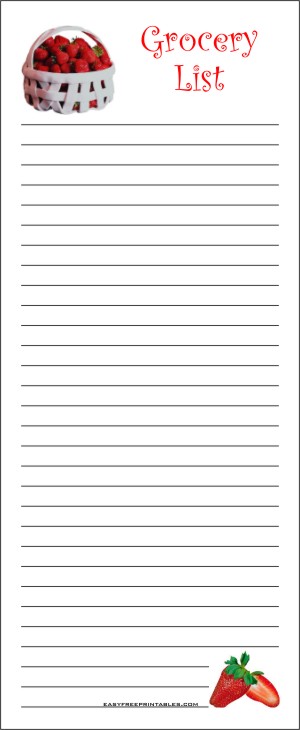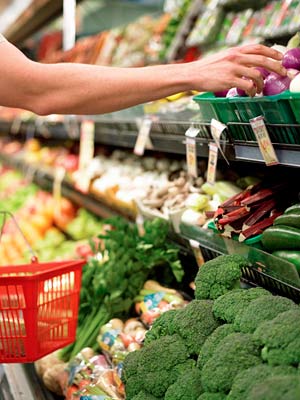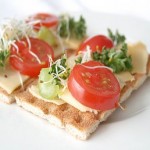Podcast 42: Will Immunity-Boosting Foods, Supplements and Super-dosing prevent COVID-19?
As we move through the rollercoaster ride of what’s been the last year and take
Walking into the grocery store can be quite overwhelming — so much to choose from, so many brands, varieties and product packaging, not to mention aisles to walk up and down. It is important to keep a few things in mind upon entering the grocery store:
 Make a Grocery List:
Make a Grocery List:
Try your best to have a general idea of the meals you will prepare throughout the week at the start of your week. Then, choose a vegetable, and allow the rest of your meal to be centred around this vegetable. Remember when making your dish, half of your plate should be filled with vegetables, one quarter from a carbohydrate and one quarter from a lean protein source. There are many colourful vegetables (and fruits) that make up the produce section of your grocery store. Try to buy locally or visit your local farmer’s market on a weekend afternoon. These food items tend to be in their peak form, and choosing vegetables that are more colourful will also bring along more vitamins and minerals for your body. Be adventurous! Ever wonder how you can prepare turnips, parsnips, bok choy or endive? The internet is filled with quick easy recipes to help make any kind of masterpiece! Just add your favourite fresh or dried spices and herbs (hold on the salt) and bring a different excitement to your dish!
Making a basic grocery list at the beginning of your week will also save you time and remove stress when you return home from a day’s work.
Perimeter of the Grocery Store:
Think about this: in most cases, when you enter the grocery store, your first encounter is with the fruits and vegetables. If you continue around the outside of the store, you come across the milk and dairy products, meat and alternative products, and finally the whole grains before finding yourself at the check-out. These are  the food items which have to be most accessible to the employees of the store as they are changed over most often having a lower shelf-life, or in other words contain few to no preservatives, and therefore can’t stay on the shelves for days. The foods in the aisles: cookies, chips, puddings, jams and frozen dinners to name a few, are less accessible because they do not require as much attention. Essentially, these food products can stay on the shelves for longer periods of times because they have longer ingredient lists and more preservatives, most times larger amounts of fat. So, if these foods can stay on the shelves for extended periods of time, think about what they do to your body when you eat them?!! Now, I’m not saying that we stay completely away from the aisles. There are still food products that help make up a balanced diet, such as oatmeal, cereal, whole grain crackers, pastas, peanut butter, legumes and tuna to name a few, but these are items we need to choose more consciously and compare the nutrition facts panels and ingredient lists from one item to the next. If given the chance to choose fresh produce, milk products and meat and alternatives, they are the better choice.
the food items which have to be most accessible to the employees of the store as they are changed over most often having a lower shelf-life, or in other words contain few to no preservatives, and therefore can’t stay on the shelves for days. The foods in the aisles: cookies, chips, puddings, jams and frozen dinners to name a few, are less accessible because they do not require as much attention. Essentially, these food products can stay on the shelves for longer periods of times because they have longer ingredient lists and more preservatives, most times larger amounts of fat. So, if these foods can stay on the shelves for extended periods of time, think about what they do to your body when you eat them?!! Now, I’m not saying that we stay completely away from the aisles. There are still food products that help make up a balanced diet, such as oatmeal, cereal, whole grain crackers, pastas, peanut butter, legumes and tuna to name a few, but these are items we need to choose more consciously and compare the nutrition facts panels and ingredient lists from one item to the next. If given the chance to choose fresh produce, milk products and meat and alternatives, they are the better choice.
Nutrition Labels:*
The Nutrition Facts Panel allows the consumer to:
a) Determine the nutritional value of foods
b) Compare similar products more easily
c) Adjust the intake of a particular nutrient (increase or decrease)
d) Mange special diets
When looking at this panel, it is best to choose foods that contain less fat, saturated fat, trans fat, cholesterol and sodium as a first general guideline. Those with special diets may have to also pay particular attention to the amount of sugars (carbohydrate) in a product or certain vitamins and minerals.
The Ingredient List:
Don’t Shop on an Empty Stomach:
 We’ve all heard this before, and it could not be more true. If surrounded by food, and your stomach is ready for a meal, it may be harder to resist those freshly baked Danishes (filled with sugar and trans fat). Have a well balanced healthy meal or light snack before making your way to the grocery store and stick to your list!
We’ve all heard this before, and it could not be more true. If surrounded by food, and your stomach is ready for a meal, it may be harder to resist those freshly baked Danishes (filled with sugar and trans fat). Have a well balanced healthy meal or light snack before making your way to the grocery store and stick to your list!
*Further information on the Nutrition Facts Panel is located under the “Nutrition” section of this website
As we move through the rollercoaster ride of what’s been the last year and take
The uncertainty of COVID-19 has impacted everyone differently, but from a food security perspective, many